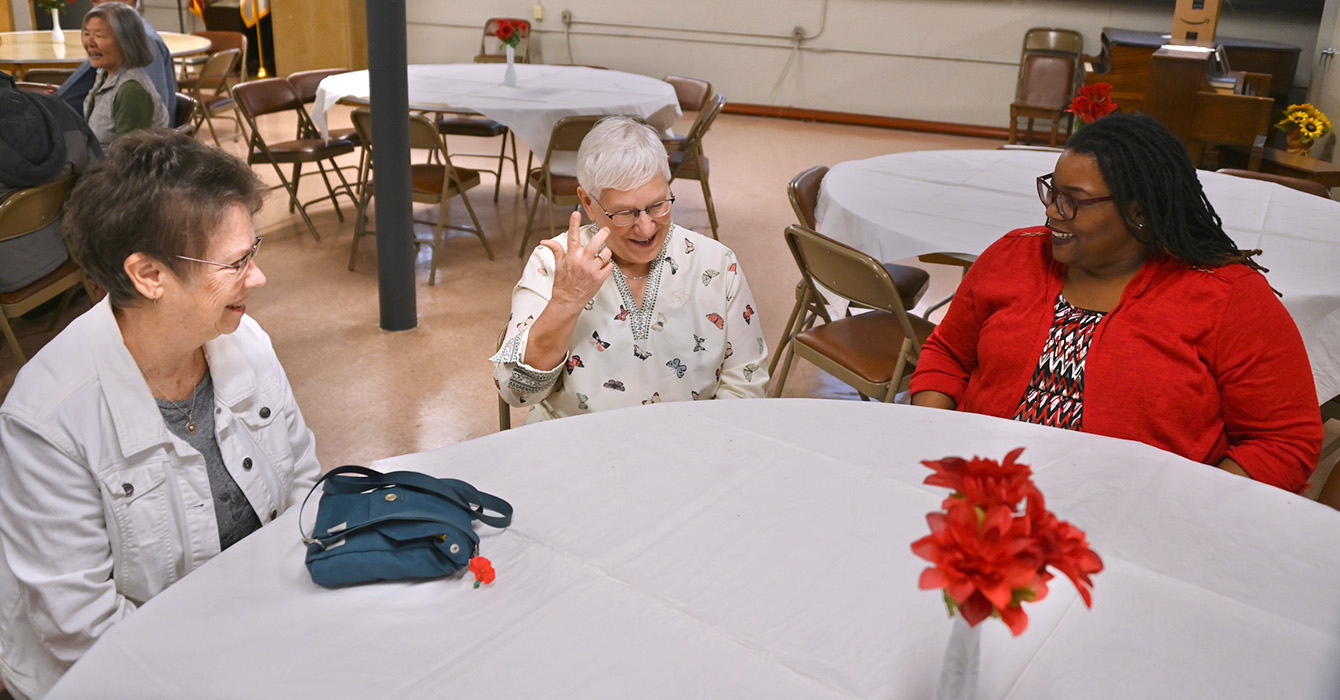Building houses, mentoring youth, providing health care and planting community gardens are all ways for church volunteers to become involved in the community around them.
But for a leader seeking to mobilize those volunteers, it can be difficult to know exactly how to move folks out of the pew and into the community. After many years of working with churches, I’ve learned that it’s important first to identify people’s gifts and passions and to understand the needs of different personalities and age groups. Then you can develop specific, well-promoted opportunities that match those gifts.
The suggestions I offer here are tailored to marshalling volunteers for community engagement, but the basic ideas can help leaders of all kinds who seek to identify the gifts of others in their organization and motivate them to action.
Tap into the gifts and passions of the people in your organization. The most engaged workers -- volunteer or paid -- are usually people doing something they are passionate about and good at. A survey is one way to assess spiritual gifts and ministry passions, but it isn’t the only way. You may already know what the people in your organization care about most deeply -- just think about what they talk about. Some may be deeply passionate about ministry to children or youth, others may be called to minister to refugees or to respond to substandard housing.
Then offer a number of different kinds of volunteer opportunities. People will gravitate toward the jobs that are most tied to their gifts and skills. So keep in mind all the kinds of people you'll need on a project: administrators, teachers, leaders, hospitable hosts, people with pastoral and mercy gifts and those who love to do things with their hands, like paint a house.
Break big projects into small pieces, with specific tasks. Rather than ask people to help with the youth after-school program, for example, be specific about what you need volunteers to do. People won’t sign up if they aren't sure what you are asking of them. Also, some may fear having to complete a task that makes them uncomfortable or that isn't in their skill set. For example, I have learned from experience that some adults won't volunteer with homework help programs for youth because they are afraid of having to do math!
For the after-school program, for example, you might break the volunteer opportunities into concrete tasks such as making and serving the daily snack; playing board games with youth for 45 minutes or entering participant information into a data base. Note that these descriptions are specific enough that potential volunteers will be able to clearly picture what they’ll be doing.
Tap into the network of existing small groups. Strong small groups can become work groups for a community ministry project. Bible study groups, committees, boards and social circles in your church may be willing to sign on for a task or project as a group. This means the project leader can spend less energy recruiting and connecting volunteers. You might consider promoting opportunities to the worship committee, the women’s ministry team and small group Bible studies, for example.
Even groups that don't meet frequently may be willing to take on a project. I was once in a group for young adults that had a monthly “come if you can” potluck and sponsored only occasional social activities. Even though we only met occasionally, we were able to take on service projects together, including raising money for a van that was given to a children’s ranch in Mexico. I was one of several people in the group who drove the van to Mexico and then stayed for a week to help on the ranch.
Create opportunities for front-line workers as well as behind-the-scenes folks. Some people relish the opportunity to be in front of a group leading an activity. There also are those who would cringe at the thought. The truth is, you will need all kinds of people to help with your community ministry efforts, and developing out front and behind-the-scenes opportunities will help more people to engage with the work. So develop those teaching, leading and mentoring opportunities, but don’t forget about the people who would be happy to help with clean-up, phone calls and cooking.
Develop opportunities for different ages and stages. Keep in mind that people have different interests and time availability, depending on their stage of life. Parents often look for opportunities that they can engage in with their children, so you may need to create activities for the whole family in order to attract them. Retired people may have more time during the day, but may not be available for the entire year if they spend the winter in a warmer climate. Older seniors also may need opportunities that respect their physical limitations or energy level (though one of the most dedicated volunteers I ever met was 85!)
There’s no sure-fire way to motivate people, but taking these steps will help you identify and nurture the talents within your organization -- and help get those folks working on projects they want to be part of.














